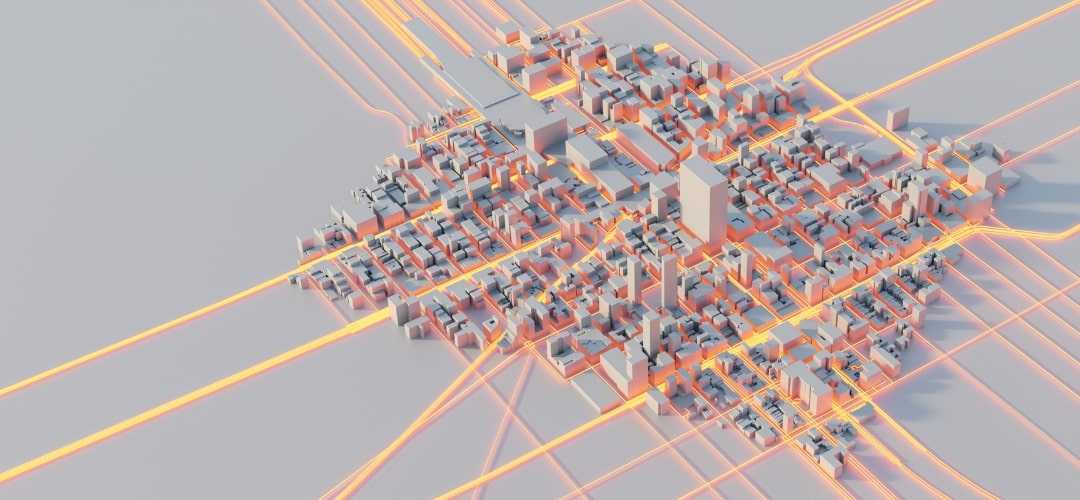Success in today’s competitive and fast-changing business world depends on being data-driven. But the enterprise architecture may hold back the enterprise from leveraging data. Traditional data architectures such as data lakes and data fabric are database-centric. These architectures use single storage for data from multiple business domains, such as billing, HR, logistics, and finance. Since most business users need data only from one or two domains, most data becomes irrelevant for the majority. Also, managing these extensive data architectures requires hyper-domain experts who work with all data. Only these expert engineers would know the storage details and can ensure data quality. Here are the modern data architectures enterprises adopt to overcome these hurdles and leverage their data potential.
Monolith Architecture
A monolithic architecture features a single, unified codebase that co-opts all the application requirements. The data flow within these traditional data warehouses follows the Extract-Transform-Load (ETL) paradigm. All tasks occur in the same process.
Pros and cons
The single codebase of monolithic architecture makes development and testing easy. Logging, performance monitoring, and configuration management remain relatively simple tasks. The tightly coupled components do away with complex communication protocols, reducing the risk of communication errors. Deployment becomes easier by copying the packaged application to a server.
Such ease and simplicity, however, come with a lack of scalability and inflexibility. The word monolith itself means “unable to change.”
Maintaining and updating the code becomes problematic when the enterprise grows. Data engineers have to define a new ETL process, or expand an existing process, for every new data product within the platform. The tight coupling means changes to one component affect the entire system, and every update causes disruption. With each update, developers must compile the entire codebase and redeploy the application. Reliability also becomes a concern, as a bug in any component can bring down the entire application.
As the ETL codebase expands linearly with each new data product, the codebase soon becomes unwieldy. Often, different application parts have conflicting resource requirements, and resource allocation becomes problematic. Startup times increase, and the entire system slows down.
Monolithic platforms also have limited scalability. While these platforms allow linear scaling, horizontal scaling becomes difficult. Platforms with large data volumes soon reach their capacity limits. A workaround is placing multiple copies of the application behind a load balancer.
Use cases
The monolithic approach was the standard architecture for the pre-cloud centralised data platforms. But it falters for complex applications. It is not suited for frequent code changes or evolving scalability requirements.
But the monolith architecture still finds use in several modern data platforms. It works well where the business case is simple and straightforward enough. In such cases, businesses can avoid taking on the complexity associated with modularity. Several big names still use the monolith architecture.
- Magento, the e-commerce platform built on PHP, has a single code base that includes all the functions and features of the platform.
- Reddit, the world’s most popular social news aggregation site, has millions of page views daily. The site uses a Python-based monolithic architecture. The architecture offers fast and reliable service with no downtime.
Modular Architecture
Modular means “consisting of multiple components.” Modular data architecture adopts a building block approach. It breaks down the application into small, independent, reusable components, allowing developers to develop, maintain, scale or test each module independently of other components.
Pros and cons
Modular architecture is popular these days due to its flexibility and resilience. Data engineers can integrate modules in different ways and scale easily. Since each module is independent, maintenance and updates become easier and do not disrupt the entire system.
But modular architecture also makes the system complex. With each module independent, communication becomes critical. Modules communicate using well-defined interfaces, but the risk of communication errors persists. And when errors occur, the independent nature of the modules makes debugging difficult.
The modular architecture is also challenging. The components needed to deploy and manage apps grow and become unmanageable. Managing deployments need advanced knowledge of DevOps practices and complex languages such as Python.
Use cases
Microservices have made the modular approach popular. The microservices approach divides an application into multiple loosely coupled fine-grained services. Each service communicates with other services using REST or similar protocols that abstract the services’ internal logic into standardised interfaces.
Developers encapsulate small, generic processes in containerised microservices such as Docker or Kubernetes and use the same for batch, real-time, and event-based processing. Kubernetes makes each module responsible for specific tasks, such as networking or storage. Cloud services such as Azure Functions and AWS Lambda abstract the underlying infrastructure. Deploying these resources allows engineers to focus on the processing logic.
Another top adopter of modular architecture is Apache Hadoop. Hadoop co-opts modules such as Distributed File System (HDFS) and MapReduce. These modules make the platform very flexible.
Mesh Architecture
Mesh architecture is a distributed, decentralised, non-monolithic architecture. It builds upon the modular approach and provides more flexibility and resilience.
The modular approach offers flexibility and scalability but is still mostly centralised. In large enterprises, centralisation often becomes a bottleneck and lengthens the time-to-value for data products. Since centralised teams rarely have complete domain knowledge, quality also suffers.
The mesh architecture takes modularity to the enterprise level and overcomes its drawbacks. It breaks down the centralised data platform into multiple decentralised data platforms. These decentralised platforms remain loosely coupled but not independent. Decentralised teams develop services for their business domains governed by enterprise-wide standards.
At the application level, the mesh breaks down the app into small, independent “services” or components. These components communicate using APIs and form a mesh of services. These services work together to provide the app’s functionality.
Pros and cons
The mesh architecture overcomes most drawbacks associated with traditional data architectures. The decentralised and distributed nature of the architecture
- Improves resilience. Even if one service fails, the rest of the system works unaffected.
- Enables parallel development of domains and reduces the dependency on a centralised data store. It also paves the way for integrated, frictionless access to silos.
- Removes the bottlenecks associated with centralised data architecture.
- Empowering domain experts ensures quality.
- Makes viable possibilities such as self-service BI.
- Promotes scalability. Developers can add or remove services as needed, making it easy to customise the application or scale as needed.
But the superior flexibility and resiliency offered by the mesh also \make the architecture more complex. When many services communicate with each other, the risk of communication errors remains high. Debugging also becomes difficult. Managing several components requires knowledge of advanced DevOps practices.
Use cases
Mesh architecture finds extensive use in microservices and cloud-native architecture. The distributed nature of the mesh architecture makes it optimal for cloud-native applications. Netflix uses service mesh architecture to provide its streaming service. Several small services work together to provide the streaming service.
There is no clear winner among the different data architectures. In fact, adopting a generic form of any of these platforms rarely works. For best results, each enterprise has to customise the data architecture, depending on the organisation structure, size, and nature of the business. Services such as Informatica offer companies reference architectures and customised solutions that make data management dynamic, flexible, and future-proof. Partnering with such providers enables the business to leverage its data assets best and become 100 percent resilient and competitive.













